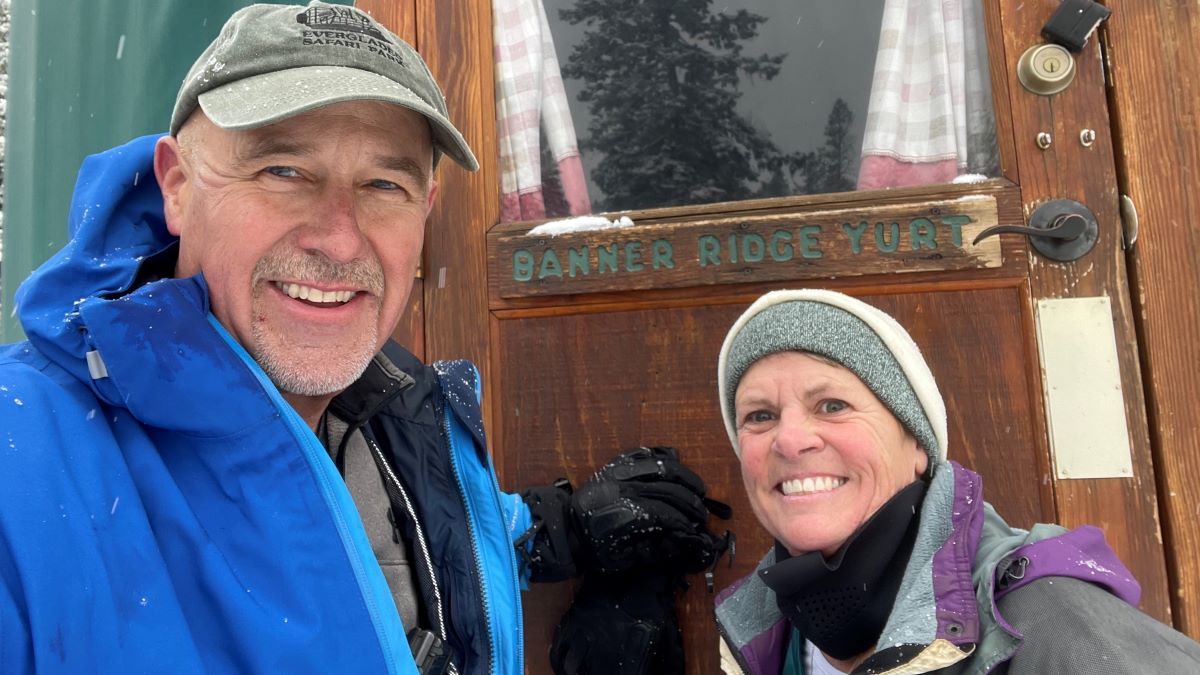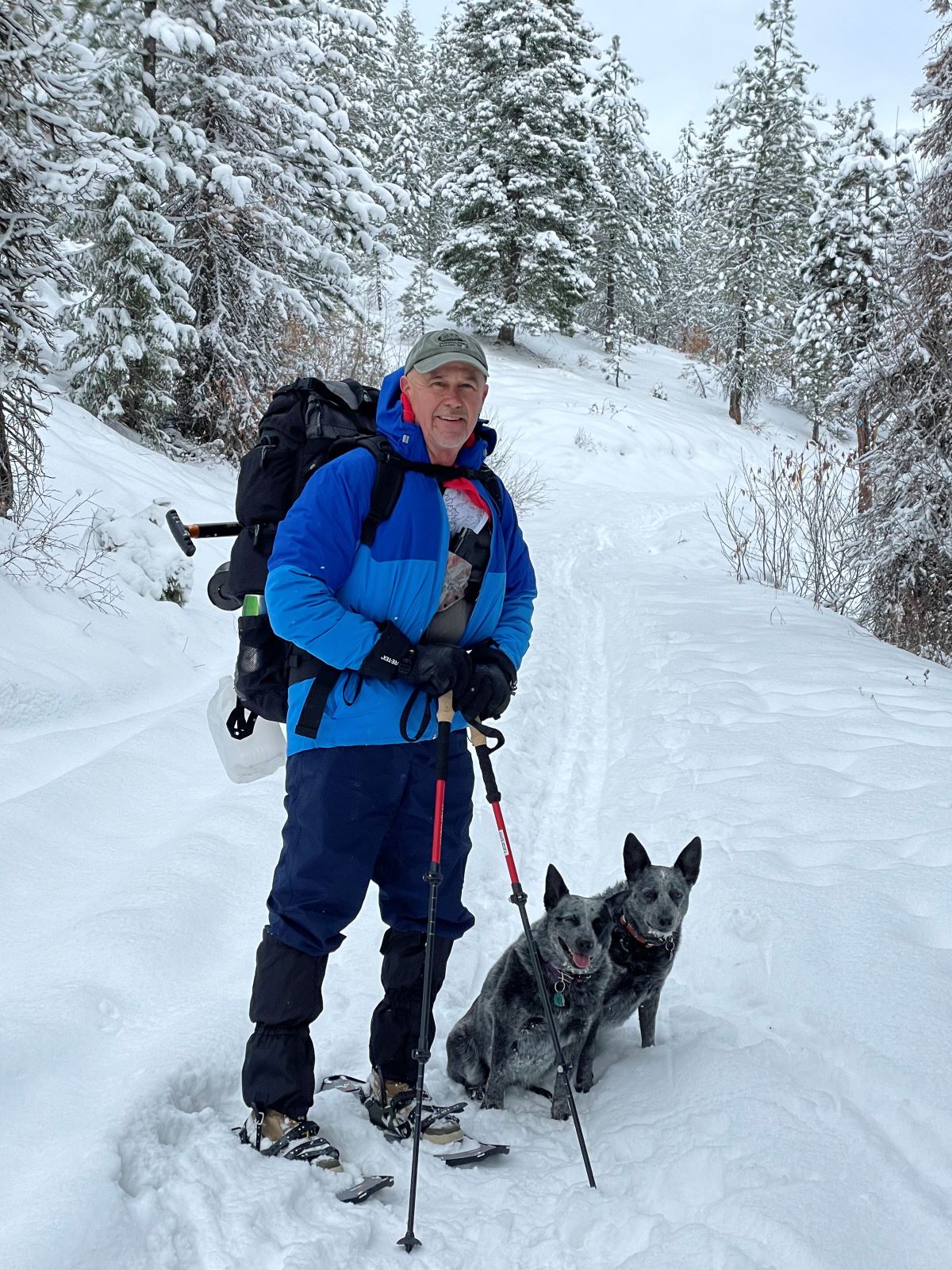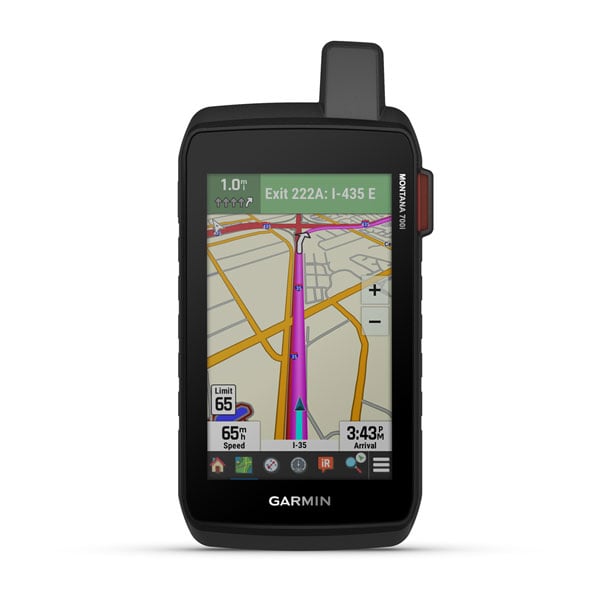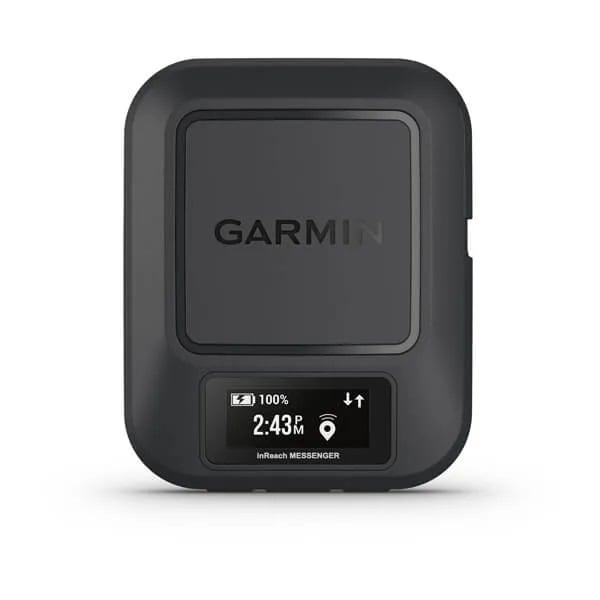
How They Got Out: Couple Stranded by an Avalanche While Driving
When Idaho State Highway 21 was closed by an avalanche, Mark and Kim Nero were stranded. With no source of communication, it’s unknown how long it would’ve been before someone came to help. Fortunately, they were prepared, and shared the story of how they got out with Garmin.
Since retiring, Mark and Kim Nero have enjoyed the outdoors year-round — camping, fly-fishing, hiking, off-roading, dune riding and more.
That’s why they initially bought their Montana® 700i device, a rugged GPS touchscreen navigator with inReach® technology¹.
“We are aware of the various dangers of the activities we are involved in and try to be prepared for the most unexpected events,” Mark said. “This adventure was no different.”
They left on a Tuesday from the trailhead parking lot to snowshoe into a backcountry yurt and stay for 2 nights. Their snow-loving Blue Heeler dogs, Ehko and Ivy, were with them.

The trek into the yurt went smoothly. They arrived early in the afternoon with plenty of time to do some exploring. But that night it began snowing — and it didn’t stop.
Still, they departed as scheduled on Thursday, but this time in deep, unpacked snow.
“The first mile out was a challenge,” Mark said. “The packed trail we came in on was mostly gone due to 2’ to 3’ snowdrifts. We had to work extremely hard to forge across the ridge.”
Even though it was mostly downhill, it took Mark and Kim nearly 3 hours to break trail and get back to their car. When they arrived, however, they realized that the tedious trek out was going to be the least of their problems.
The road out was not plowed and had roughly 19” of wet snow.
Fortunately, they were prepared with shovels. It took them an hour to dig out their Subaru Outback and make a path to the road, at which point the question was, could they even drive on the road?
They weren’t sure, but knew they at least needed to try, and they had a car equipped to handle the conditions.
“To my surprise, the all-wheel drive of our car was amazing,” Mark said.
Despite low visibility, they made it down the hill 6 miles until they came to an abrupt stop as snow collapsed in on the car. A sizable avalanche had slid across the road.
Mark yelled out in surprise and rolled down the windows to find snow up to the sides of the doors.
“After another 40 minutes of wrestling with the snow, we dug out enough to back up,” Mark said. “The car was high and centered on the snow, so we had to dig out below as well. I backed out roughly 100 yards to a somewhat level and wide spot, expecting to stay there, but not sure for how long.”
In a worst-case scenario, they were prepared to stay overnight with enough water, food, blankets and gas to keep the car warm. But it certainly wasn’t ideal, and there was no determining when they would be able to get out.
Though outside of any cellphone coverage, they weren’t completely cut off from the world. Mark was able to send an inReach satellite message to his son: “Need help. Avalanche across the road at around mile 54–56. No tow truck will work. Need a plow. Beg them and get time.”
He tried to emphasize the seriousness of the situation. After some additional communication and discussion of options by using two-way messaging on their device, the Neros received good news: The Idaho Transportation Department was sending a loader up to help dig them out.
Late in the afternoon, the loader crested the hill, headlights beaming.
“It was a beautiful sight for sure,” Mark said. “Those moments when your body shifts from adrenaline mode to relief are a true high. Of course, a high I could do without.”
Mark climbed up on the loader to meet the person who came to save them and was greeted with a smile and extra water.
“It was like Hollywood movies, with a great ending,” Mark said.
Though Mark and Kim felt thankful and blessed that they had their Hollywood movie ending, they acknowledged that in large part it was due to preparedness. They had everything they needed, had communicated the itinerary and who to contact in case of emergency to their son, had backup plans in place and had a reliable means of communication for the location.
“A Garmin GPS with inReach is an ideal and affordable solution,” Mark said. “In some cases, it will likely save your life — or someone else’s.”
1Active satellite subscription required. Some jurisdictions regulate or prohibit the use of satellite communication devices. It the responsibility of the user to know and follow all applicable laws in the jurisdictions where the device is intended to be used.






